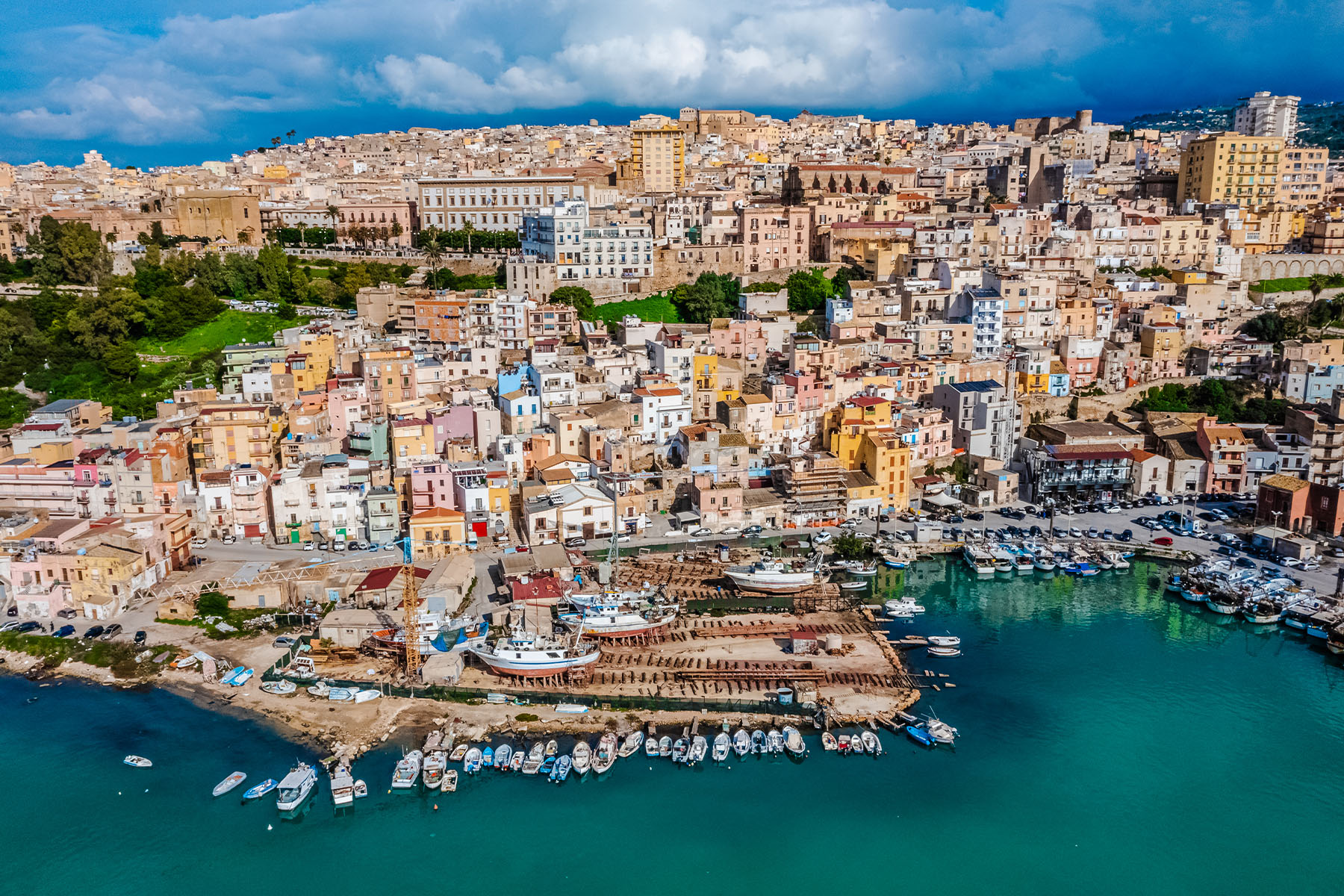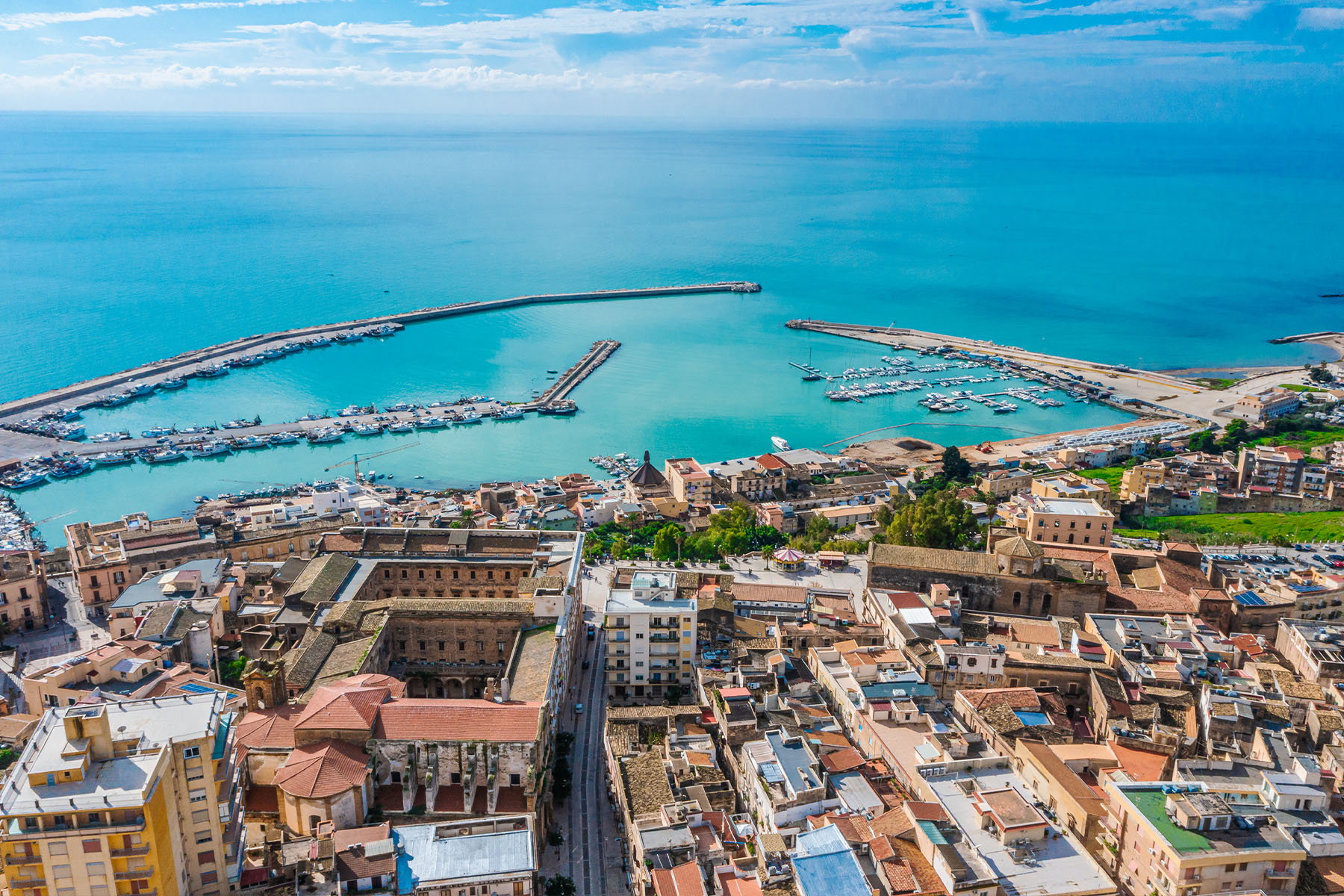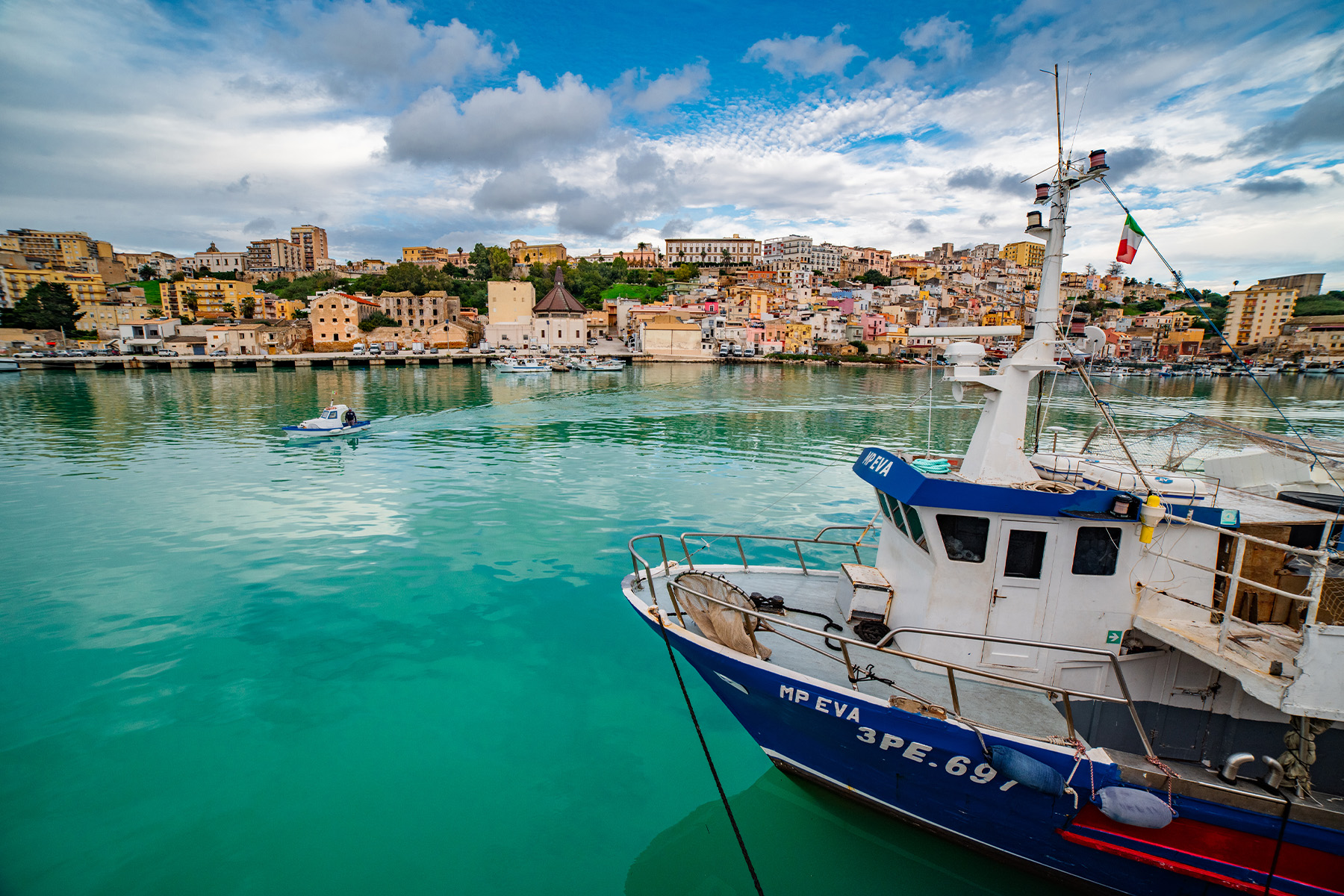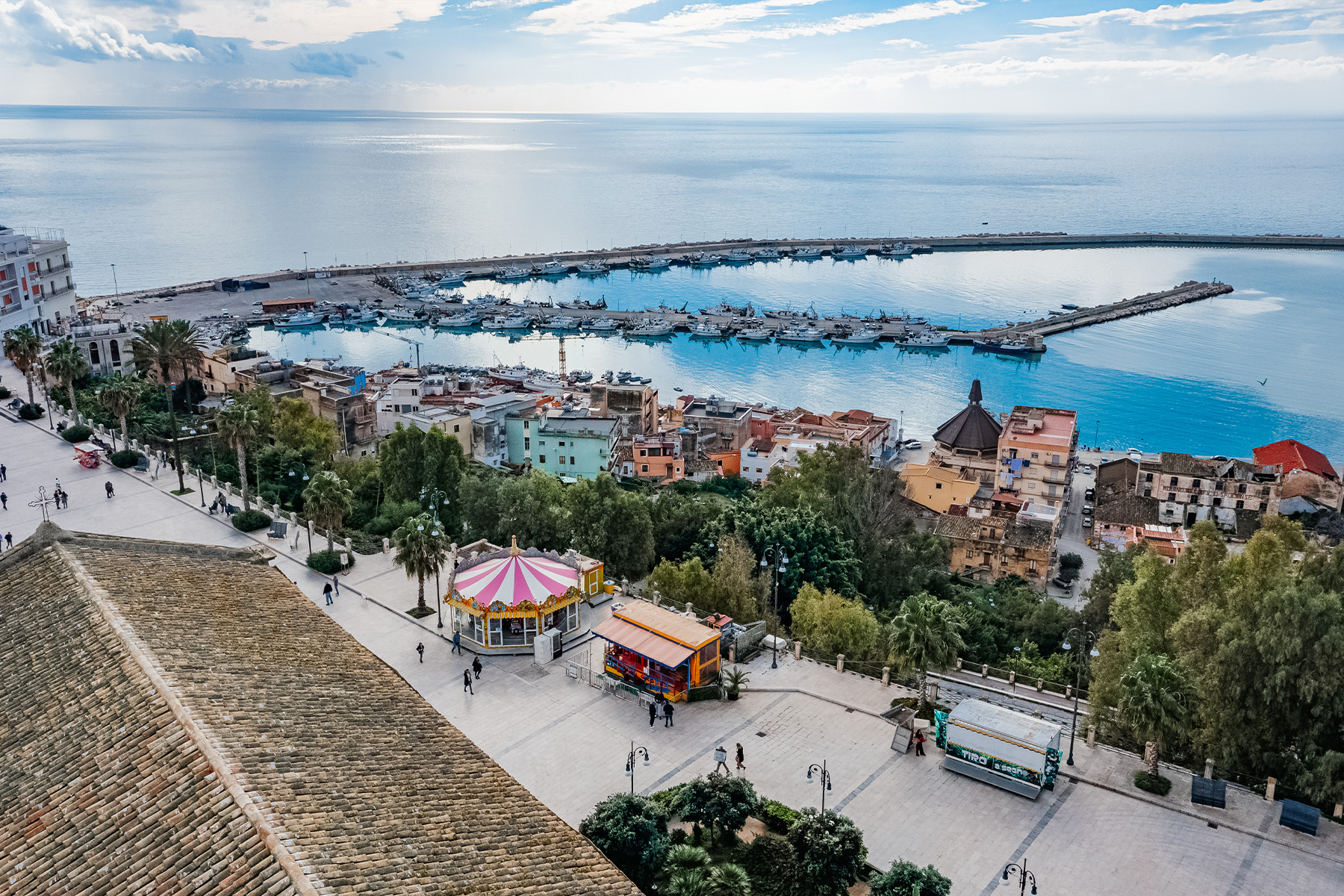Discover the most significant and unmissable places in Sciacca!
Porta Palermo
Porta Palermo, only 30 metres from our facility, is an important historical entry point to Sciacca. In the past, many towns were protected by defensive walls with the aim of safeguarding their inhabitants, and access was possible through ‘gates’. The Palermo Gate, erected in 1335, is a significant example of this defensive system. Today, its exterior façade reflects the Baroque style, the result of changes made in 1753 during the reign of Charles III of Bourbon, with four rusticated columns and ancient wooden gates. At the apex, a large eagle with spread wings, symbol of the reigning House of Bourbon, soars.
Caves of Daedalus
A place where, for thousands of years, the earth has shared its deepest breath with man. It is the home of Kronos, the father of Zeus, god of time, fertility and agriculture. Myth is at home here. These are, quite possibly, the oldest baths in the world. Designed by the great Athenian architect Daedalus, who had arrived here after escaping from the labyrinth of Crete and losing his son Icarus. Where a saint, St Calogero, in the 16th century, used to make patients sit to cure their respiratory diseases. That it was good for the body, as well as the spirit, is guaranteed by the saint’s name itself: Calogero, in fact, means ‘the beautiful old man’ in ancient Greek.
Enchanted Castle
It is an evocative and magical place, the most visited in the province of Agrigento after the Valley of the Temples. A land on which the artist Filippo Bentivegna built his kingdom, made of more than 3,000 faces carved on stone and tree trunks representing his subjects. A work unique in the world, situated on a hilly terrace on the slopes of Mount Kronio overlooking the sea, as soon as you enter you feel as if you are in a special realm, an enchanted world, a veritable treasure trove of creativity and flair. His was a work that over time did not receive the attention it deserved, and this was because its creator was considered ‘crazy’.
In fact, after his death, the site remained abandoned for years and was subjected to various acts of looting.
The bare stone Bentivegna gave form to the pain felt. From here emerge the souls that inhabit the Enchanted Castle, a people with whom the artist lived and interacted, a sovereign with his subjects. For each face there is a name and a story, and walking among these works creates a great illusion: one is convinced that one is admiring the works, but in reality it is they who are watching the passers-by. Some of these profiles are sketched, others defined, but all lead visitors to the heart of the garden where there is a small house where Bentivegna lived. Here paintings on the wall tell of his stay in the United States, a riot of hope and tragedy.
The Luna Castle
Castello Luna, also known as Castello Nuovo, is the large fortress that dominates the town from above.
This large building dates back to medieval times, to 1380 to be precise, when the vicar of Sicily gave his daughter Margaret in marriage to the nobleman Arturo la Luna, after whom the castle was named.
Today, the complex consists of: The city walls and the large tower, which have unfortunately deteriorated over the centuries; then there is the cylindrical tower and the Count’s Palace, from which one can admire a beautiful view of the ci
Soap House Museum
Small museum space, dedicated to the history and science of soap. The house museum is an old rural building from the early 19th century, fully restored, where there are also two presses and some objects related to rural activities in the area. The idea of creating this museum space, stems from the fact that producing natural soaps and cosmetics, it was our desire also to convey historical, technical to scientific news to all those interested in discovering the wonderful world of soaps, whose history dates back as far as 2800 BC.
All tours are guided and at the end of the tour there is also an explanation of all our products with the possibility to try them as well. Visits are only by reservation at the indicated times.
Toy Museum
The Toy Museum of Sciacca was born in 2014. In just over a year, it has welcomed many people eager to learn about this new reality.It is conform to everyone: young and old. Everybody participates with different emotions: adults get excited remembering through toys the past times and children get fascinated looking at toys different from theirs. The museum is divided by decades. It is a true journey through time. Each room reconstructs in the smallest details a bygone era in a succession of rooms. The average visit takes about 1 hour. Each visit is led by the owner or his staff, who with anecdotes and stories try to engage visitors to travel through time..
Porta San Salvatore
In medieval times, the gate was the main entrance into the city and is the most architecturally well-kept and rich. The style is typical of Renaissance, it features sumptuous decoration that flows into a balcony structure, characterized by three heraldic coats of arms at the top.
Steripinto Palace
Erected in 1501 by Antonio Noceto, nephew of the famous botanist Gerardo Noceto (1475-1545), it is one of the oldest palaces of Sciacca and it represents one of the most interesting examples of plateresque art in Sicily, in which structural and morphological elements of late Catalan Gothic and Italian Renaissance origin are blended. The name Steripinto comes from the fusion of the noun “hosterium“,common name for other medieval palaces in Sicily, meaning fortified palace, and from the past participle “pictum“, literally it means portrait, but it can also be translated as “adorned”.
The facade features a dense series of diamond-pointed stone ashlars with a beautiful decorative effect. A graceful note constitute the two marble columns inserted in the two cantonments on either side of the elevation, perhaps carried over from older buildings that were demolished. The coat of arms in the center of the lunette, above the portal, is of the Lucchesi Palli family, to whom the building passed in ownership by marriage. The coat of arms on the capitals of the mullioned columns is, however, of the Noceto family (whose symbol is the walnut tree). The interior, heavily remodeled over the centuries, retains a beautiful ribbed cross vault supported by strong pointed arches.







